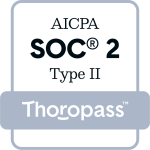For years, enterprise software solutions came in three forms: in-house development solving problems exactly the way businesses wanted using an internal team, third-party off the shelf solutions that fit business needs a little bit more loosely but usually launched much faster and cost less, and a custom solution developed by a third-party that either mostly or completely develops from scratch. A new format is now emerging, creating a close fit with business requirements while staying cost effective and easy to launch quickly — low code/no code (i.e. “LC/NC”) systems.
Low code/no code systems are built with flexibility in mind to easily adjust to the specific needs of the businesses who implement them. Easy to understand user interfaces with drag-and-drop or point and click capabilities shift development from professional developers and IT teams to business users. Acquiring large, talented IT development teams drives up the cost of internal development, but that cost can be mitigated with LC/NC. It’s no wonder Gartnerpredictsthat low code solutions will cover more than 65% of all application development by 2024 and that 66% of large businesses will deploy at least 4 low code platforms.
“A new format is now emerging, creating a close fit with business requirements while staying cost effective and easy to launch quickly — low code/no code (i.e. “LC/NC”) systems.”
Where to Use LC/NC
One of the most beneficial developments in the low code/no code space are Robotic Process Automation applications. These LC/NC platforms allow users to easily build automated workflows for standardized business processes. Modern LC/NC tools, combined with open API connectivity let businesses build in automation over a few weeks with little to no IT involvement.
Low code/no code isn’t just for automation software. Many analytics programs are utilizing LC/NC to let businesses craft the reports that are right for them. Experts estimate our society generates around 1.145 trillion MB of data every day. With such a tidal wave of information to sort through, new low code/no code analytics software helps business leaders see exactly what they need with easily customizable visualizations and reports. Some advanced solutions are incorporating AI and machine learning to help analysts automatically generate the most insightful reports (although these solutions are much more on the low code than the no code side).
Where Things Get Complicated
In big organizations, “shadow IT” refers to information technology systems deployed by departments other than the central IT department, usually created as workarounds to issues users face with their technology stack. Without periodic check-ins from IT or guidance from third-party knowledge bases or training sessions, these piece-meal solutions can create a web of quick fixes complicating the situation and creating more issues.
Senior Forrester Analyst, John Bratincevic, thinks LC/NC platforms offer a great opportunity tomitigate shadow IT,“Modern low-code platforms represent an opportunity for IT to empower [citizen developers], collaborate with them, and act as mentors, all in a governed and visible environment. In short, low code isn’t a threat to IT — it’s likely the best solution to shadow IT we’ve ever had.”
This philosophy of collaboration between citizen developers and IT departments explains the recent emergence of Centers of Excellence (COE). These teams, web portals, or knowledge bases deliver easy access to best practices, research, support, and training to help employees build software properly and avoid roadblocks. Many third-party LC/NC companies provide best practices documents and online knowledge bases as a great starting point for COEs, and many businesses combine these resources with collaboration from IT developers and business leaders to keep LC/NC solutions productive.
How Zappix Uses Low Code/No Code
At the heart of every Zappix solution is the robust low-code/no-code Zappix Studio system. This Service Creation Environment (SCE) is what allows Zappix to design, integrate, and launch powerful automation and self-service tools in under 4 weeks. Visual IVR, On-Demand Apps, Agent Assist, Proactive Engagement, and every Zappix implementation emphasizes speed, convenience, and ease of use for users. That experience extends to our customers as well as our customers’ customers with LC/NC and Zappix Studio.
The low code/no code drag-and-drop functionality of our Digital Self-Service solutions builder means our automated experiences easily and quickly adapt to what’s most important to the businesses implementing Zappix products. Changes are easy to create and implement at many levels, including On-Demand App look and feel, work-flow automation, voice IVR connectivity, API integration, user forms, and Proactive Engagement campaigns. Because of the functionality of LC/NC, all these changes can be completed with zero to minimal coding experience.
As an industry leader in customer experience and self-service, we put our expertise to use making sure our own customers have the best experience possible launching and then fine-tuning and updating their solutions as quickly as possible.
Low code/no code solutions have bridged the gap between agility, effort, and cost, allowing third-party software solutions like Zappix to deliver the ease and simplicity of off shelf solutions with the customized, perfected solutions of in-house software development. The benefits are clear — improved operational agility, decreased costs, better customer experience, and faster digital transformation.






